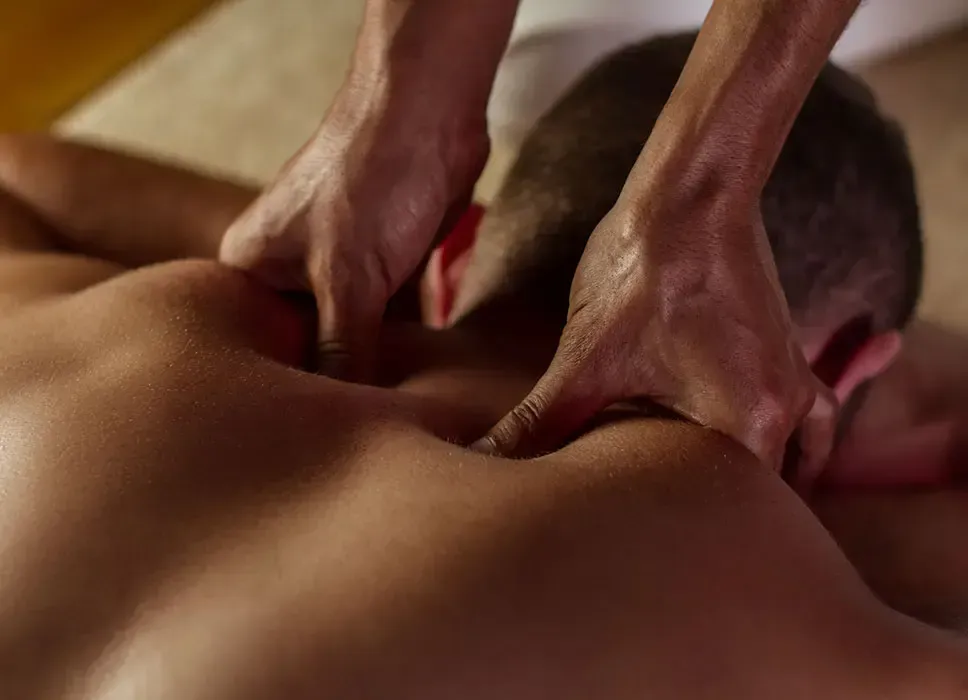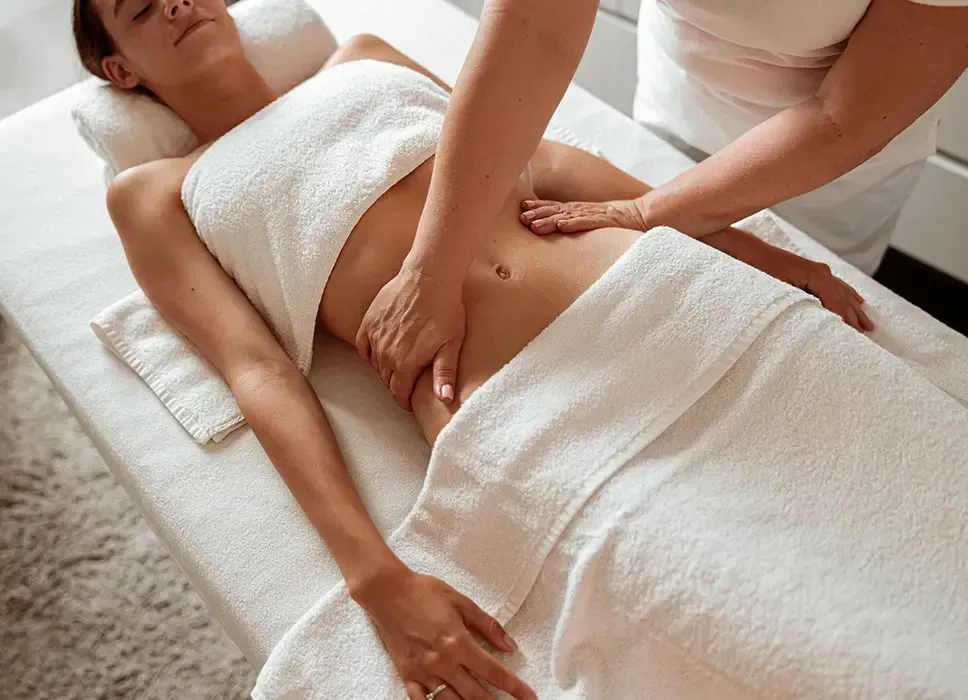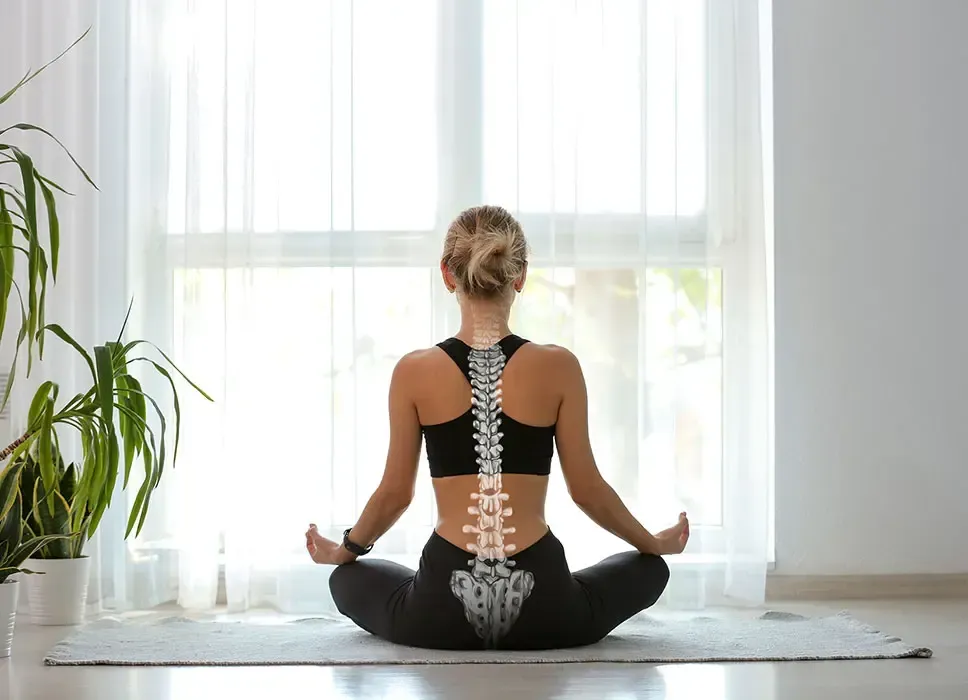By Lydia Chiu
•
August 1, 2024
Of course, we all know how to undress and lie under a sheet on a massage table, but do you really know how to fully receive all the benefits obtainable from a massage? You may be surprised to learn that you didn’t – until now. Following is a self-checklist you can use to help you get your money’s worth from each massage treatment. BEFORE YOUR TREATMENT Think ahead. Pack a gym bag with a comfortable change of clothes if your treatment is scheduled after work. If your therapist doesn’t provide refreshments, throw in some nuts or a dried fruit snack – you may need the calories to help get you going after your treatment. If you wear contact lenses, consider bringing a case to put them in while you’re on the treatment table. Don’t forget your glasses to wear afterward, or your solution for putting them back in before the drive home! Don’t eat for at least an hour prior to your treatment. For one thing, nothing ruins a great experience like heartburn! Secondly, the process of digestion prevents your mind from drifting and this distraction changes the experience. Receiving a massage immediately after eating a large meal may also contribute to muscle cramps during your treatment. However, hunger is also a mood-killer, so make sure that you’re not hungry. If you must eat something, keep it light – just enough to satisfy you for an hour or two. Drink water. No, no really… drink more water. If you’ve heard it once, you’ve heard it a thousand times – water remains the most important element in bodywork. Most people who have received any type of bodywork already know that it’s important to flush toxins out of your system after a treatment. But did you know that it’s equally important to hydrate yourself before you get on the table? The pressure from your therapist’s hands pushes lactic acid out of muscle tissue into your blood and lymph, where it can then circulate out of your body. But if you’re dehydrated, your blood and lymph flow is sluggish and stagnated, and may not receive these toxins as readily as thinner, less viscous blood and lymph. If these toxins are unable to enter the blood and lymph, they remain in the your muscle tissue and can cause unnecessary post-treatment soreness. Don’t worry if you have to interrupt your treatment to use the facilities – the benefits far outweigh the inconvenience! Arrive on time – physically and mentally. Plan your schedule so you don’t have to rush to your appointment. If you’ve had a busy day, consider arriving a few minutes early so you can relax in the spa lounge (if available) and quiet your mind before your treatment starts. Some spas offer complimentary herbal tea – take advantage of this luxury, if it is available. Chamomile or Kava Kava can help take the edge off and help you relax. If your spa offers a sauna, hot tub or steam shower, consider scheduling a brief warm-up before your treatment. Turn off your cell phone. It’s your massage. Really, you can have it any way you want. But if you’re really interested in getting the most from your massage therapy session, eliminate distractions and make the most of the time you have on the table. Communicate with your therapist about your concerns, needs and expectations before you get on the treatment table. If you have special needs or health considerations, be sure to make these clear at the very beginning. In many states, massage therapists are not required to keep treatment records, so you may need to remind your therapist about your special needs prior to each appointment. If you have preferences in regard to room temperature, lighting, music type or volume, be sure to express these preferences, too. Your therapist wants your repeat business and will do whatever it takes (within reason) to ensure your satisfaction. Getting on the table. Don’t be bashful. Remember that certified massage therapists are trained and experienced professionals. Modesty and respect for personal space is a big part of any bodywork training. Whether you remain partially clothed or not, certified massage therapists are trained in sheet-draping techniques to ensure that your modesty is protected at all times. Generally speaking, the less you are wearing in terms of clothing and jewelry, the fewer “obstacles” your therapist will have to work around, and the more effective your treatment is likely to be. However, it is also imperative that you are comfortable. Don’t be afraid to ask your therapist how much clothing is appropriate to remove, if you’re in doubt. And above all, don’t waste energy worrying about it or feeling uncomfortable. Nothing ruins a relaxing, stress-relieving massage like more stress! DURING YOUR TREATMENT Breathe. If water is the most important element, then oxygen is a very close second. I have always found it amusing and ironic that, at the times we need oxygen the most – during concentration and exertion – is when we “forget” to breathe. When the therapist finds a “knot” and begins working away on it, the client tends to start concentrating on the area (and thus, holding his/her breath), as though waiting to see if the muscle will release. In fact, muscle release occurs on your exhale. So, if you’re holding your breath, the muscle is also holding its tension and it will not release. Also, you may have heard the expression “energy flows where attention goes.” Stagnated energy is largely the reason that muscular knot developed in the first place – concentrating your attention on it only adds to the problem. The best thing to do when this situation grabs your attention is to start narrowing your focus to your deep, rhythmic breathing. Try to visualize tension leaving your body with each exhale, and allow your body to relax a little more with each breath. Relax. No, really… relax MORE. Don’t engage your muscles to “help” lift the weight of your leg (or arm) while your therapist pulls the sheet under it. I know that you’re just trying to help, and that’s a really nice gesture. But in reality, it doesn’t help – when your muscles engage, your limb becomes rigid, and this not only makes the act of draping more difficult for your therapist, it has a reverse effect on the therapeutic value of your treatment. Energetically, it is impossible to give (expend energy) and to receive (conserve energy) at the same time. If you’re engaging your muscles, you’re giving. One of the primary objectives of massage is to achieve such a profound state of relaxation that you are able to receive the most healing benefit possible. It takes time to achieve such a relaxed state; each time you engage your muscles, you start the process over. Ask yourself what you’re paying for, and stop giving away priceless therapeutic value from your treatment! Be mindful about how much you talk during your treatment. I’m not going to tell you not to converse – sometimes a verbal release is just as therapeutic as a physical release. If you need to “vent”, and your therapist is comfortable sharing with you in this way, then by all means – vent! But be sure to ask yourself one question, first: what is it that you want to get out of your treatment? If you want to receive all the wonderful benefits obtainable from your treatment, then don’t distract your therapist – or your mind – with a lot of personal conversation, even if your therapist encourages it. Excited or animated conversation also causes your body to tense up. Consider saving the lengthy discussion for a lunch-date with your friends – it’s free, and then you’ll get more out of the treatment that you’re paying for. Communicate. With the above being said, be sure to tell your therapist if his/her pressure is too soft or too deep. A “relaxation” treatment should never be uncomfortable. Generally speaking, a “therapeutic” treatment may be mildly uncomfortable, at times, but should never be painful. A painful treatment will actually cause your muscles to become more tense, and will likely make you feel worse than you did before your treatment. On the other hand, a treatment that is too light may tickle (also causing your muscles to tense up), or may not be as effective or as pleasurable as you would like. So don’t be afraid to speak up if you’re not getting what you want. Your therapist wants to keep your business and will happily adjust his/her pressure to your liking. Also be sure to communicate your comfort level with regard to temperature. If you’ve never received bodywork while shivering, I can tell you from experience that it hurts – for days! If you feel chilled and your therapist has a table heater, ask that it is turned on or up, or ask for a blanket. Let go on two levels. Most people are aware that we hold mental and emotional stress within our bodies. If you don’t believe this to be true, then pay attention to what your body does the next time you receive sudden bad news. You’re likely to first feel a “knot” in the pit of your stomach that may then move up to your throat. Your shoulders begin to move upward and forward, as though attempting to shield your heart. Your spine may slouch as you sulk, and then you may get a painful “kink” in your neck that remains long after the feelings have passed. You may have heard the phrase “muscle memory”. The phrase actually has two meanings. It is most commonly used to describe a phenomenon that occurs when you practice an awkward physical activity until you can do it gracefully and without much thought. The second meaning is more literal – we actually hold memories of our past experiences within the cells of our bodies. The mind may forget, but the body never does! Muscle stimulation can stir up those long-forgotten memories. Pay attention to your thoughts, as your therapist begins his/her work and you begin to relax. If your thoughts are pleasant and enjoyable, then you shouldn’t have much trouble relaxing through your treatment. However, if bothersome memories begin to surface, you may have some emotional “letting go” to do before you can expect your muscle tension to let go and release. If your therapist is trained in Body/Mind Connections, he/she may be able to help you through this process by helping you identify core issues and where they are being stored in your body. The two of you can then work together to address the emotional and physical components of these issues simultaneously. This “dual action” achieves the most profound results in your healing process. Turn off your mind. During a quiet, relaxing massage is a great time to meditate, “zone out” or even fall asleep. Some people resist falling asleep during bodywork treatments because they don’t want to miss any part of this truly enjoyable experience. However, it is during these altered states of consciousness that you are most receptive to receiving the nonphysical benefits of the treatment, such as chakra balancing, energy clearing, etc. If you reach a state where you’ve lost time, or where you find yourself awake and yet dreaming, you did it right! Don’t worry if you’re not able to reach these deep levels during your treatment. This is something that can take years of dedicated practice, and there are still many other benefits you can receive from bodywork, even if your mind is overactive. If you’re unable to “check out” of your mental state, then just try your best not to follow your therapist’s movements with your mind. Don’t think about your work, your grocery list, or today’s “to do” list, either. Instead, think about a sunny beach, a trip to the mountains, a walk in the clouds, or anything that helps you relax. Remember: a relaxed mind = a relaxed body and a stressed mind = a tense body. AFTER YOUR TREATMENT Take your time. Don’t immediately jump off the table as soon as your therapist leaves the room. Open your eyes slowly and enjoy the ambience of the room. Gently bring your awareness back into the room. Sit up slowly and remain seated on the edge of the treatment table for a few moments, if you feel light headed. Now is a good time to consume a few calories to re-ground your energy if you feel off-balance. Dress yourself in warm and comfortable clothes before leaving. Drink even more water. Failure to flush toxins out of the body by drinking a lot of water after bodywork could result in excessive muscle soreness or nausea, not to mention that you’ve defeated the purpose of getting the treatment in the first place. There is no “magic number” of ounces you should consume, but the more water you drink, the better you’ll feel after your treatment. So remember – water, water, WATER! Getting on with it. If you have to return to work after your treatment, try to take it easy, but notice how much more energy and ambition you have! Otherwise, just use the rest of your day to relax. Enjoy your good mood, knowing that all is well with the world – at least with your world, at least for today. Take a hot bath, if you can. Try adding some sea salt or Epsom salt and some relaxing essential oils (like lavender or bergamot) or 2-3 chamomile tea bags. Notice how much more deeply you sleep, compared to usual, and how much more energy you have the next day! Above all, continue taking care of yourself with a healthy diet, exercise and regular maintenance massage – at least once per month, and once per week is ideal, if your schedule and budget allow it. Plant seeds for great future service. If the service you received met or exceeded your expectations, be sure to tip your therapist and refer a few friends. This will ensure that your therapist will be just as excited as you are for your next visit.






